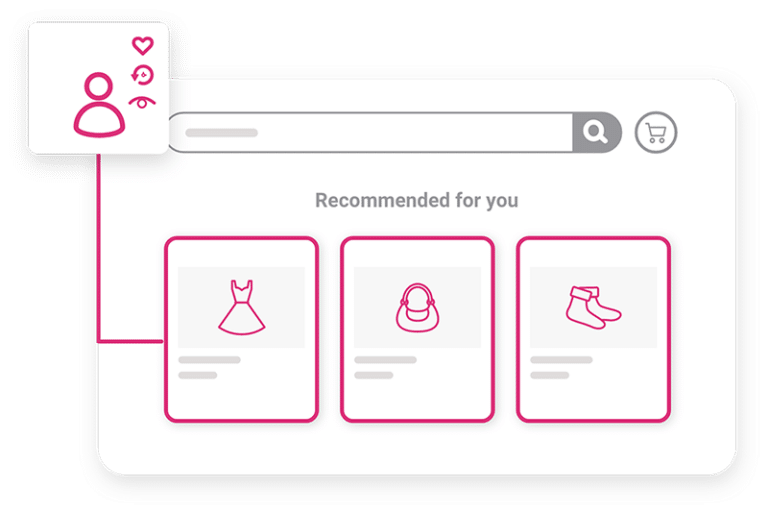In this increasingly digital world, the role of digital personalization has become more and more important in ecommerce. Digital personalization is nothing new. In fact, you probably experience it in your everyday life. When you watch Netflix and it recommends shows based on what you’ve watched. Spotify suggests playlists you would enjoy. Or when you’re served up an ad for those surround sound speakers you’ve been eyeballing.
With that…
What is digital personalization?
In a marketing context, online personalization means understanding who your customers are and what they want so you can better cater to them. That means learning about everything from your customers’ shopping habits and purchase history, to their browsing patterns and in-store preferences – and everything in between.
Knowing as much as possible about your customers helps ensure they have a better overall experience with your brand. How? It allows you to customize product recommendations, upsells, cross-sells, and even make recommendations when the product they’re looking for isn’t available.

Think of it like having a digital concierge for your ecommerce site. Over time, you’ll learn all about your customers’ wants, and you can tailor their online experience specifically to them. Who wouldn’t want that?
But digital personalization goes beyond just a customer’s favorite dress or electronics brand. You can customize the messaging they receive, the items you promote, the sales you offer, and much more.
What are the results?
For some context, an Accenture survey revealed that 91% of shoppers are more likely to buy from brands that provide relevant offers and remember them. And, 83% of respondents said they would share data if it meant a more personalized experience.
Consider also the effects of the pandemic. With so many restrictions, shoppers were left with little choice but to turn to ecommerce for non-essentials.
Digital Commerce 360 highlights that online retail sales increased 32.4% year-over-year in 2020 ($791.7B) and are up 39% in the first quarter of 2021, which is estimated to have accelerated ecommerce by two whole years ahead of previous predictions.




